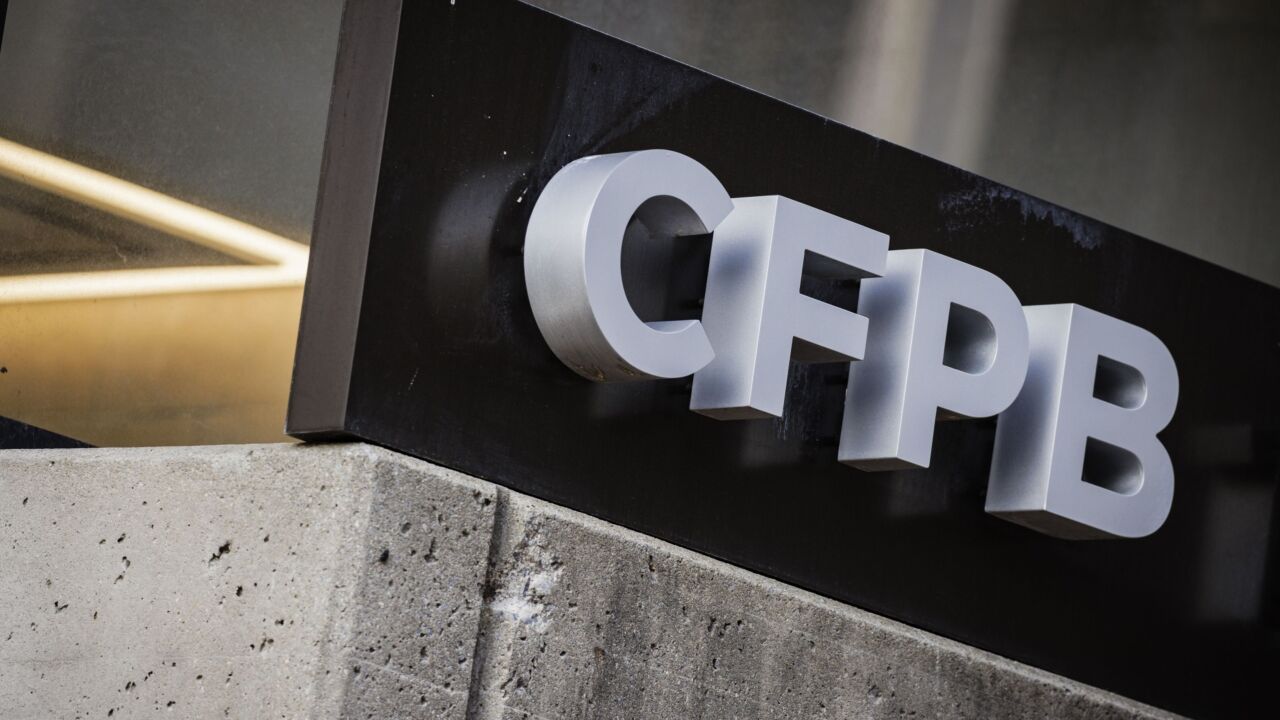Amazon's checkout-free shopping model, currently in testing with employees, is a clear threat to the status quo for retailers. But does it also pose a risk for banks?
Devon Watson, vice president of software research and strategy at Diebold Nixdorf, says the threat is clear: "If you have a virtual basket of goods stored on your phone, you don't necessarily need a credit card transaction anymore."
Amazon already has its own private label and cobranded credit cards, and ties into other issuers' reward systems via partnerships. Amazon could make its preferred payment methods the default for its stores, erasing a bank's ability to market its own card as top-of-wallet.
But Amazon isn't the only game in town, and banks have just as much opportunity to become the locked-in payment card as they do to be locked out of the process entirely.
"Banks and retailers can create some interesting new options in what happens in this space," Watson added. "A partnership with a bank and retailer could allow an electronic transfer of money."

Amazon unveiled
"I think that interplay, when a bank can work as a better bridge between businesses and consumers is an exciting thing, and data is at the heart of that," Watson said. "You can monetize that through a broadly connected commerce between banking and retail."
Since completing its $1.8 billion acquisition of
In that world, Diebold Nixdorf integrates its technology in all aspects of the consumer shopping and banking experience, even utilizing Amazon Alexa integration to make shopping lists.
Payments are certainly part of the puzzle, Watson added, but probably not quite as important as the technology around the payment that a bank can offer to help merchants better understand their customers.
Other companies are pursuing the same vision.
"Banks are increasingly aware that, in order to avoid relegation to being dumb pipes, they must do a better job of delivering value on top of their core services," said Jordan McKee, a senior payments analyst with 451 Research.
In the coming year, banks will think more about how to leverage data assets as the basis of new products and services, McKee said. "In digital, those who own the data will win. Banks certainly have the data, but they haven’t quite figured out how to monetize it in non-traditional ways."
The financial and payments industries may first see banks use transactional data more prominently in support of advertisements and card-linked offers to target audiences, McKee added.
Because a service like Amazon Go underscores a broader trend in commerce in which payment is becoming decoupled from the shopping experience, some "well-established go-to-market and product strategies will be impacted up and down the payments value chain," McKee said.
In that regard, issuers must get creative with their data assets and invest in technology and talent that can provide unique customer insight to retailers, McKee said.
But it's a bit of an uphill battle for issuers, especially when considering that a key component of any connected commerce has to be, in most cases, a bank-branded wallet app. Banks must overcome the branding and distribution advantage that Apple and Google have if they want their own apps to edge out the default payment options on most smartphones, McKee added.
Diebold Nixdorf is watching mobile wallet adoption and market share closely, knowing that the technology is advancing faster in places like Asia and Pacific regions.
"In North America, it is far more challenging environment," Diebold's Watson said. "There is such penetration of the Apple ecosystem, and Apple doesn't allow access to its NFC [Near Field Communication] antennae, making it hard for a bank to roll out a contactless wallet that gets enough adoption to really be viable," Watson added.





